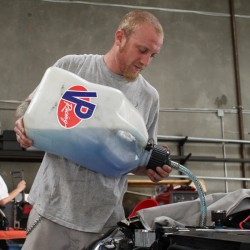6000K vs 6500K LED: Understanding the Differences
6000K or 6500K, here “K” is a short form or you may say it is a sign which stands for a color temperature. We measured this in Kelvin or K. They have nothing to do with temperature. Kelvin does not mean that the higher color temperature brings the higher working Temperature. For example, the daylight is roughly 5200K, Halogen bulbs tend to be around 4000K – 4500K.
What is 6000k and 6500k?
When searching for LED headlight bulbs or replacement headlights, you will notice that on the market most headlights and bulbs are 6000K. As for the options of 5000K, 6500K, 7000K. Besides this, some other color temperatures are few in their number.
The 6000K bulbs are the noticeably harsh cold white light you will recognize from some car headlamps. 6000K lighting falls between the white and blue sides. People who choose this color are usually trying to get an exotic, daylight feeling, more luxurious look.
6500K appears as pure white, which is very close to natural daylight on a cloudy day.6500K headlights, on the other hand, are known as "daylight" headlights because they have a very mimic the appearance of natural daylight, which can make it easier to see details and colors on the high color temperature that is similar to the natural daylight. They are often preferred by drivers who want a brighter and more efficient light for driving at night, as they are able to more closely.
When we consider manufacturer's tolerances, we will see a little difference between 6000K and 6500K. If we reach the higher Kelvin temperatures such as 6000K-12000K, we see the differences viewed under daylight exterior lighting and even open-shade are less noticeable to the human eye. One more important thing must be noted: film and digital cameras are more sensitive to these color temperature ranges rather than human vision. Besides this comparison, our brain also helps us to automatically correct our color perception on-the-fly, especially when it’s in daylight.
Artificial daylight color temperature sources tend to focus on more noticeable differences. Unlike morning sunlight, it may produce incomplete or imbalanced spectrums, regardless of the manufacturer's claims known as CRI index (color rendering index).
The CRI index is a quantitative measurement between neutral light and standard light sources. It is a light source to reveal the colors of various objects faithfully.
If we compared side-by-side, the two light sources would appear a little different if we are viewing the LEDs directly. If some of the light is bounced within a balance and diffused somehow the incident illumination will appear more uniform. If mixing in other color-temperature sources in the same area as we mentioned above the 500°-difference in color temperature should not be a concern at all.

Difference between 6000K and 6500K
Here from the above discussion, we can introduce some differences between 6000K and 6500K headlights that are worth considering if you are thinking about upgrading your car's headlights:
1. When we view the two kelvin differences from LEDs directly, we must be mistaken. The color temperature of a headlight can affect its visibility in certain conditions. For example, a headlight with a higher color temperature may be more effective at cutting through fog or other types of inclement weather, as the blue or white light is better able to penetrate the water droplets in the air. On the other hand, a headlight with a lower color temperature may be more effective at illuminating objects on the road at close range, as the warmer light is better able to highlight the colors and details of the objects.
2. If we compare them side by side, eventually 6000K emits a bright white-blue light, while 6500K produces a slightly brighter light. Headlight bulb emits bright white light with a mixture of light blue, and a purer blueish-white look.
3. Not only 6000K but also 6500K emits bright light. 6500k appears slightly brighter than 6000k so its appearance is colder as it contains more blue light.
4. It's similar to midday daylight. This cool white color provides excellent on road visibility as well as aftermarket looks.
5. 6000K headlights which are referred to as "white" color. 6500K headlights, on the other hand, are known as "daylight".
6. On the light spectrum there isn't much difference between 6000K and 6500K, however different brands have their own take on the Kelvin ratings and this is probably why 6500K appears considerably more purple than the 6000K which is only tinted purplish-bluish.
7. If we consider it by price and production, there is a balance between cost and power of 6500K LED headlight bulbs. They are easier and more inexpensive to produce.
8. In autumn and winter, due to the influence of shine, body temperature and hormones affect people's mood changes, leading to unhappiness. In this case, a full spectrum light bulb, 6000K emits natural sunlight bulbs.
9. 6000K provides vertical daylight and electronic flash whereas 6500K provides daylight overcast.
10. 6500K means that, when a black body was heated to 6500 kelvin, the black portion and the tube of the light would be the same in color. On the other hand, 6000 kelvin, itself a favorable light because human eyes understand it as most natural light, such as natural daylight.

In conclusion, while many people may be aware of the important role brightness plays, most tend to forget about color temperature. The higher the color temperature which means the overall color is closer to cold tones, the easier it is for people to concentrate, since the blue spectrum suppresses the secretion of melatonin in the brain that makes people or you may consider this for a driver feel sleepy. On the other hand, lower color temperature helps them to relax.
Last but not the least, due to the time of the day, season variance, weather change, and geographical variety, it must be under consideration that the color of natural daylight can be dramatically different.
Finally, it's worth noting that some drivers may prefer the look of one type of headlight over the other. While 6000K headlights provide a modern and stylish look, some drivers may find the bluish hue of 6500K headlights to be too stark or artificial. On the other hand, some drivers may prefer the brighter and more efficient light provided by 6500K headlights, even if they don't particularly like the way they look.
Ultimately, the choice between 6000K and 6500K headlights is a matter of personal preference and depends on your individual needs and priorities. Both types of headlights have their own unique set of benefits and drawbacks, and the best choice for you will depend on your specific driving needs and the look you want to achieve for your vehicle.




